
An independent bipartisan task force has concluded that it is “indisputable” the United States engaged in torture and the George W. Bush administration bore responsibility. The 11-member Task Force on Detainee Treatment was convened by The Constitution Project after President Obama chose not to support a national commission to investigate the counterterrorism programs. It was co-chaired by Asa Hutchinson, a former Republican congressman from Arkansas, NRA consultant and undersecretary of the Department of Homeland Security under President George W. Bush. The report concludes that never before in U.S. history had there been “the kind of considered and detailed discussions that occurred after 9/11 directly involving a president and his top advisers on the wisdom, propriety and legality of inflicting pain and torment on some detainees in our custody.” While the report focused largely on the Bush administration after 9/11, it also criticizes a lack of transparency under Obama. We speak with Laura Pitter, counterterrorism adviser at Human Rights Watch. [includes rush transcript]
Transcript
AMY GOODMAN: This is Democracy Now!, democracynow.org, The War and Peace Report. I’m Amy Goodman, with Nermeen Shaikh.
NERMEEN SHAIKH: We turn now to a landmark nonpartisan review of interrogation and detention methods used in the post-9/11 era that concludes the United States engaged in torture. The 577-page report was two years in the making and found the highest officials in the George W. Bush administration were responsible. It was conducted by the Task Force on Detainee Treatment, an 11-member panel convened by The Constitution Project after President Obama chose not to support a national commission to investigate the counterterrorism programs. The authors of the report wrote that never before in U.S. history had there been, quote, “the kind of considered and detailed discussions that occurred after 9/11 directly involving a president and his top advisers on the wisdom, propriety and legality of inflicting pain and torment on some detainees in our custody.” The bipartisan panel was co-chaired by Asa Hutchinson, a former GOP congressman from Arkansas, NRA consultant and undersecretary of the Department of Homeland Security under President George W. Bush.
ASA HUTCHINSON: We found that U.S. personnel, in many instances, used interrogation techniques on detainees that constitute torture. American personnel conducted an even larger number of interrogations that involved cruel, inhumane or degrading treatment. Both categories of actions violate U.S. laws and international treaty obligations.
This conclusion is not based upon our own personal impressions, but rather is grounded in a thorough and detailed examination of what constitutes torture from a historical and legal context. We looked at court cases and determined that the treatment of detainees, in many instances, met the standards the courts have determined as constituting torture. But in addition, you look at the United States State Department, in its annual country reports on human rights practices, has characterized many of the techniques used against detainees in U.S. custody in the post-9/11 environment—the State Department has characterized the same treatment as torture, abuse or cruel treatment when those techniques were employed by foreign governments. The CIA recognized this in an internal review and acknowledged that many of the interrogation techniques it employed were inconsistent with the public policy positions the United States has taken regarding human rights. The United States is understandably subject to criticism when it criticizes another nation for engaging in torture and then justifies the same conduct under national security arguments.
There are those that defend the techniques of—like waterboarding, stress positions and sleep deprivation, because there was the Office of Legal Counsel, which issued a decision approving of their use because they define them as not being torture. Those opinions have since been repudiated by legal experts and the OLC itself. And even in its opinion, it relied not only on a very narrow legal definition of torture, but also on factual representations about how the techniques would be implemented, that later proved inaccurate. This is important context as to how the opinion came about, but also as to how policy makers relied upon it.
Based upon a thorough review of the available public record, we determined that, in application, torture was used against detainees in many instances and across a wide range of theaters.
AMY GOODMAN: We’re going to continue now with Asa Hutchinson, the former Republican congressmember and former undersecretary of homeland security under President George W. Bush, speaking Monday about the findings of the bipartisan task force he co-chaired on detainee treatment. While the report focused largely on the Bush administration after 9/11, it also criticized a lack of transparency under President Obama. Again, Republican co-chair Asa Hutchinson.
ASA HUTCHINSON: And while our report is critical of the approval of interrogation techniques that ultimately led to U.S. personnel engaging in torture of detainees, the investigation was not an undertaking of partisan fault finding. Our conclusions about responsibility should be taken very simply as an effort to understand what happened at many levels of the U.S. policy making. There is no way of knowing how the government would have responded if a Democrat administration were in power at the time of the attacks. Indeed, our report is equally critical of the rendition-to-torture program, which began under President Clinton. And we question several actions of the current administration, as well. It should be noted that many of the corrective actions that—were first undertaken during the Bush administration, as well.
But the task force did conclude that the nation’s highest officials, after the 9/11 attack, approved actions for CIA and Defense personnel based upon legal guidance that has since been repudiated. The most important decision may have been to declare the Geneva Convention did not apply to al-Qaeda and Taliban captives in Afghanistan or Guantánamo. The administration never specified what rules would apply instead. The task force believes that U.S. defense intelligence professionals and servicemembers in harm’s way need absolutely clear orders on the treatment of detainees, requiring at a minimum compliance with Common Article 3 of the Geneva Convention. This was not done. Civilian leaders and military commanders have an affirmative responsibility to assure that their subordinates comply with the laws of war. President Obama has committed to observe the Geneva Conventions through an executive order, but a future president could change it by the stroke of a pen.
AMY GOODMAN: Asa Hutchinson, former Republican congressman from Arkansas and undersecretary of the Department of Homeland Security under President George W. Bush, speaking Monday about the findings of the bipartisan Task Force on Detainee Treatment.
For more, we go to Washington, D.C., to Laura Pitter, counterterrorism adviser at Human Rights Watch.
Welcome to Democracy Now!, Laura. Can you talk about the significance of this report? And the man who’s delivering the findings, Asa Hutchinson, was just in the news as an NRA consultant, pushing armed guards in the schools. He is President Bush’s administration official, the undersecretary of homeland security.
LAURA PITTER: Yeah, the report is very significant for the fact that this was a bipartisan commission that included individuals both on the Republican and Democratic side with high levels of extensive national security experience. And they intended to look at the record objectively, without any preconceived notions. And they ultimately came to the conclusion that the U.S. engaged in torture, and they found that the evidence was indisputable. And they found this without reservation. So it’s very significant, because, as you know, many of the former Bush administration officials who were in charge of authorizing the abuse and other senior-level intelligence officials who were involved in implementing the abuse have denied that what the U.S. did in its name to hundreds of detainees in U.S. custody was torture. So, really, this commission should put those denials to rest. It clearly was—it was torture, and this commission found so.
NERMEEN SHAIKH: Laura Pitter, can you explain a little how the task force was put together? They were apparently 11 members, and they represented quite a wide range from within the Bush administration—is that correct?—and subsequent administrations.
AMY GOODMAN: And who chose them?
LAURA PITTER: Well, The Constitution Project was in charge of putting the panel together, and they tried to get people—you know, very senior-level people who had national security experience, both former congresspeople in the judiciary, medical experts, from both sides of the political spectrum. And the objective was, because it was clear that Congress was unwilling to look into a commission of inquiry, to analyze what had happened historically post-9/11. There was an initiative, a legislation for a commission of inquiry, sort of like a truth commission, that was not accepted in Congress, and then Obama clearly said that it was more important for him to look forward than to look back. They felt like it was important to all Americans that they analyze what the U.S. did post-9/11 to the detainees in custody, given the widespread level of abuse and the authorization at the most senior levels. They felt like it was an important part to preserve U.S., you know, moral credibility in the world. And so, that’s how the commission started.
AMY GOODMAN: Yet, President Obama disagrees with this? He—
LAURA PITTER: I don’t know if there has been a reaction.
AMY GOODMAN: He disagrees—well, he would not—he would not commission the study. He did not want this to move forward, so that’s why it’s—is that right? Can you talk about the progression of how this happened, starting with Senator Leahy, head of judiciary?
LAURA PITTER: So, Senator Leahy introduced legislation for a commission of inquiry, sort of like a truth commission, and Congress did not accept that. And then the Obama administration had made very clear that it was more important to them to look forward rather than to look backward. So they also chose not to do any kind of thorough investigation of the wide-scale abuse that was—you know, it was overwhelming evidence of serious and widespread abuse. So, that is why this commission gathered and decided to look into it from a bipartisan perspective and, you know, come to its conclusions, without any preconceived notions about what those conclusions might be.
AMY GOODMAN: The Task Force on Detainee Treatment also condemned the force-feeding of prisoners who go on hunger strike as a form of protest, a situation that’s right now underway at Guantánamo. It’s believed the majority of prisoners are on hunger strike. This is Dr. Gerald Thomson, a professor of medicine emeritus at Columbia University, former president of the American College of Physicians.
DR. GERALD THOMSON: We do not believe that force-feeding should be an approach to the hunger strike. If you can imagine being a detainee and using refusal to eat as a form of protest, and then you are forced to eat, forced physically to eat by being strapped into a specially made chair, and restrained—having restraints put on your limbs, your arms, your legs, your body, your head, so that you cannot move, having a tube inserted into your throat that extends into your stomach, and you’re trying to resist that with the only muscles that are free in your throat—pain, discomfort, obviously. But in addition to that, food is then forced, in a liquid form, into your stomach. You’re kept in the chair for at least two hours, usually more than two hours, to prevent you from vomiting and undermining the force-feeding. You can’t go to the bathroom during that time. Your dignity is taken away. The World Medical Association and international officials have clearly identified that process as cruel, inhuman and degrading treatment. And whatever the—given the level of brutality, it could extend to torture.
AMY GOODMAN: That is the Task Force on Detainee Treatment member Dr. Gerald Thomson, professor of medicine emeritus at Columbia University, former president of the American College of Physicians. Laura Pitter, this is particularly relevant now, as it does look like most of the 166 prisoners at Guantánamo—though the administration says fewer, most, it looks like, are on hunger strike right now.
LAURA PITTER: Yes. I mean, his testimony, his findings were very, you know, thoroughly looked into and very dramatic. And indeed, force-feeding can amount—it is abuse, and it can amount to torture. And it is ongoing at Guantánamo now, basically because the detainees have resorted to these really drastic measures because food going into their bodies is really the one thing that they have control over anymore. They’ve been detained now there for more than 10 years, most of them. And it’s unclear—there doesn’t seem to be any political will on the part of the administration to transfer detainees out, even though more than half of them have been cleared for release and determined not a security threat to the United States. So, it’s—you know, they’ve resorted to these desperate measures, and, you know, the U.S. is force-feeding many of the prisoners there at this point.
AMY GOODMAN: In 2011, we spoke to independent journalist and Democracy Now! correspondent Jeremy Scahill. He had just returned from Somalia. The report cites him extensively. Jeremy explained how he discovered a secret CIA facility being used for counterterrorism, as well as an underground prison in the Somali capital of Mogadishu. We’re going to play a clip of what he said.
JEREMY SCAHILL: And when we arrived in Mogadishu, within days, we discovered that the CIA had just finished construction of a pretty massive compound at the Aden Adde International Airport in Mogadishu. And the compound, which is not even hidden in plain sight—it’s just in plain sight—looks like a gated community. It has about a dozen buildings inside of it, brand new. It’s a walled compound with guard posts at all of its—at each of its four corners. It’s right on the banks of the Indian Ocean. And then next to it there are six or eight small hangars. And the CIA also has its own aircraft there.
I was able to track down a senior Somali intelligence official and began the process of investigating this facility. And what I discovered is that the CIA is training what was described to me as an indigenous strike force, members of Somalia’s National Security Agency, its intelligence division, to conduct operations in the areas controlled by the Shabab in Mogadishu. And, you know, the situation is very fluid, but the Shabab control a huge portion of Mogadishu. And the internationally recognized government controls about 30 square miles of territory. When I asked a very prominent businessman who works in the port of Mogadishu who controls the rest, he said the Shabab government, and referred to it as such.
AMY GOODMAN: That’s Jeremy Scahill. His book Dirty Wars: The World Is a Battlefield is coming out next week. You can watch our hour interview with him on next Tuesday. But that report of Jeremy’s is cited extensively by The Constitution Project task force report. Laura Pitter, if you can talk about that and what it means for the Obama administration today?
LAURA PITTER: Well, I believe it’s discussed in the context of renditions. And the Obama administration has not repudiated the use of renditions, which is the illegal transfer from—of one person from one country to another. It has banned the use of torture, which is obviously good, but it’s done so by an executive order, and that executive order could be revoked by a future administration. So, you know, what the—all of what is going on, if renditions are in fact happening, is still classified, and, you know, we don’t really have any idea of how much the U.S. is using the practice of rendition or to what—in what context they’re doing so.
NERMEEN SHAIKH: Well, Laura Pitter, the report is especially critical of the Obama administration for what it calls its, quote, “excessive secrecy.” Could you elaborate on that?
LAURA PITTER: Yeah, I mean, the U.S. has basically—it’s overclassified everything related to the torture program. Detainees are not allowed to talk about what went on in CIA custody, what happened to them, their treatment. It’s all—it’s all classified. So it makes it very difficult, for example, for them to communicate with their lawyers and with the outside world about what happened to them. Also, lots of information about what went on in the program is still classified. There’s a 6,000-page report that was put together by the Senate Select Committee on Intelligence that comes to the conclusion that the use of enhanced interrogation techniques was not effective. We know what the conclusion of the report is, but the actual basis for that conclusion is still classified. And there’s an enormous amount of information that the administration continues to protect.
For example, many of the detainees who were in U.S. custody have tried to bring suit in U.S. courts for the abuse, but the Obama administration has invoked the state security, the national security grounds for preventing information about the torture coming out in that litigation. So, it’s called the state secrets doctrine. So, this Constitution Project called for the Obama administration to stop using that doctrine to prevent victims of the abuse from bringing their claims in U.S. court, because under the Convention Against Torture, to which the U.S. is a signatory—and it’s also incorporated in domestic law—there is an obligation to provide redress or have an avenue for redress for victims. And that does not currently exist. Not any detainee who’s been in U.S. custody and was abused in U.S. custody has been able to bring a claim, for that reason. So, that is one of the recommendations of The Constitution Project, that there certainly is information that can and should be classified, such as certain information that identifies individuals or legitimate sources and methods, but torture is not a legitimate source or method that needs to be protected, and therefore the administration should stop trying to prevent information about the torture program from coming out in the public domain.
AMY GOODMAN: This is the Republican co-chair of the Task Force on Detainee Treatment again, Asa Hutchinson, the former undersecretary of homeland security under Bush, speaking about the findings regarding the use of torture during interrogations.
ASA HUTCHINSON: The task force believes it is important to recognize that—that is—that to say torture is ineffective does not require a demonstration that it never works. A person subjected to torture might well divulge useful information. Nor does the fact that it may sometimes yield legitimate information justify its use. What values do America stand for? That’s the ultimate question. But in addition to the very real legal and moral objections to its use, torture often produces false information, and it is difficult and time-consuming for interrogators and analysts to distinguish what may be true and usable from that which is false and misleading. Also, conventional, lawful interrogation methods have proven to be successful whenever the United States uses them throughout history—and I have seen this in law enforcement, as well. We’ve seen no evidence in the public record that the traditional means of interrogation would not have yielded the necessary intelligence following the attacks of 9/11.
AMY GOODMAN: And this is task force member retired Brigadier General David Irvine, a former strategic intelligence officer and Army instructor in prisoner interrogation. He said the CIA’s own logs demonstrate the failure of torture to elicit useful information.
BRIG. GEN. DAVID IRVINE: Public record strongly suggests that there was no useful information gained from going to the dark side that saved the hundreds of thousands or tens of thousands of lives that have been claimed. There are many instances in that public record to support the notion that we have been badly misled by false confessions that have been derived from brutal interrogations. And unfortunately, it is a fact that people—people will just say whatever they think needs to be said if the pain becomes more than they can bear. Other people are so immune to pain that they will die before they will reveal what an interrogator may wish to know.
I’ll just say, in conclusion, that in 2001 the United States had had a great deal of experience with tactical and strategic interrogations. We had been very successful over a long period of time in learning how to do this and do it very, very well. Unfortunately, when the policies were developed that led us to the dark side, many of those who were involved in formulating those policies had no experience with interrogation, had no experience with law enforcement, had no experience with the military, in how these matters are approached. One of the most successful FBI interrogators prior to 2001 was a guy named Joe Navarro. And Joe is noted for having said—and he was probably one of the handful of strategic interrogators qualified to interrogate and debrief a high-value al-Qaeda prisoner. But Joe said, “I only need three things. If you’ll give me three things, I will get whatever someone has to say, and I will do it without breaking the law. First of all, I need a quiet room. Second, I want to know what the rules are, because I don’t want to get in trouble. And third, I need enough time to become that person’s best and only friend. And if you give me those three conditions, I will get whatever that person has to say, and I will get it effectively and quickly and safely and within the terms of the law.” So, we can do it well when we want to. We need to do more, looking at our history, to remind us what worked and why it worked, and not resort to what may seem at the time to be expedient, clever or necessary.
AMY GOODMAN: That’s task force member retired Brigadier General David Irvine, former strategic intelligence officer, Army instructor in prisoner interrogation.
NERMEEN SHAIKH: Laura Pitter, very quickly, before we conclude, I wanted to ask you—you mentioned the Senate Intelligence Committee’s 6,000-page report, and some have suggested that this Constitution Project, the revelations in this report, will put pressure on the administration to finally declassify the Senate Intelligence Committee report. Could you comment on that very quickly, in 30 seconds?
LAURA PITTER: Yes, I mean, I think it will. There’s enormous pressure now, given all the public—information that is in the public domain. I mean, The Constitution Project didn’t have subpoena power and didn’t have access to classified information, and they were still able to come to the conclusions they did. But there’s an enormous amount of information that is still classified that we don’t know, that’s important to get out in the public record. So, I do think that it will put pressure on the administration to do so.
AMY GOODMAN: Laura Pitter, we want to thank you for being with us, counterterrorism adviser at Human Rights Watch. When we come back, we get an update on the investigation into the Boston Marathon bombings. Stay with us.

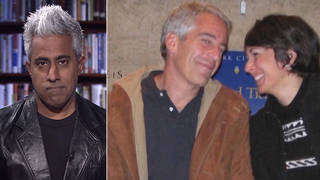
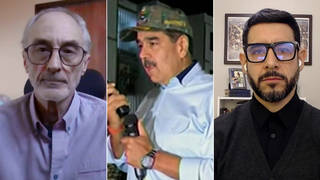
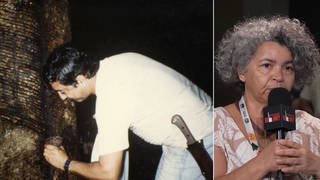
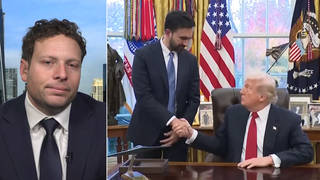





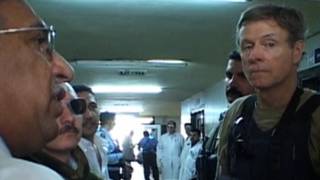
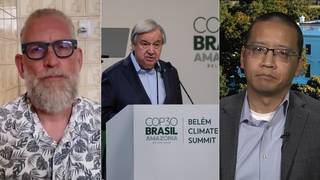
Media Options